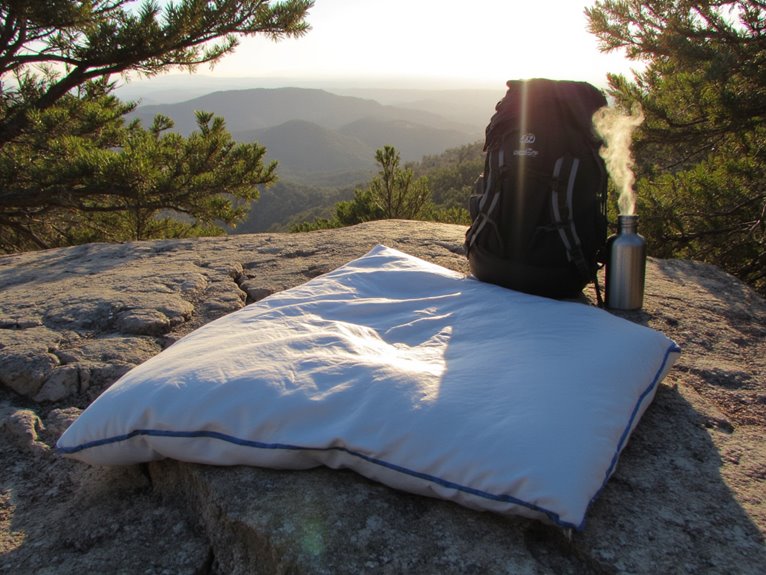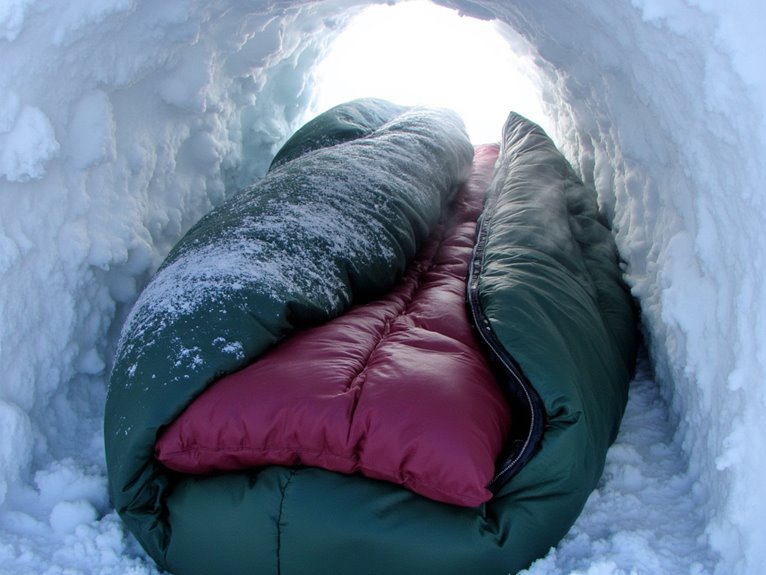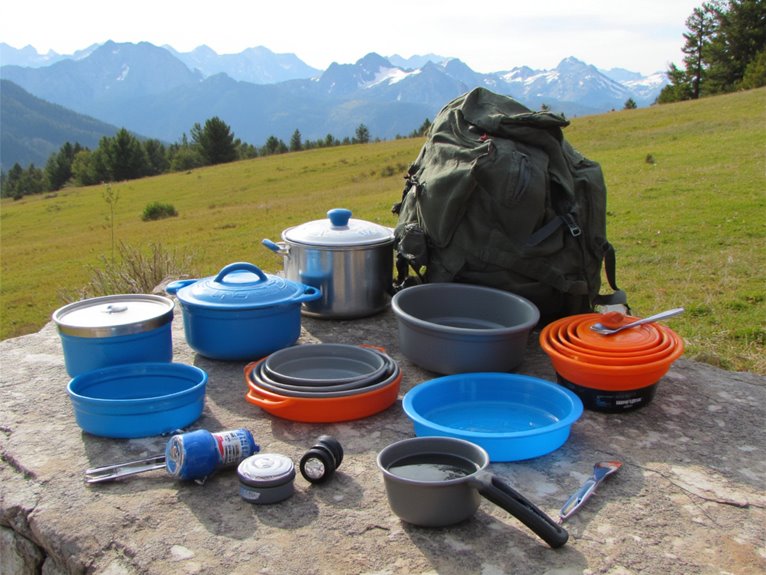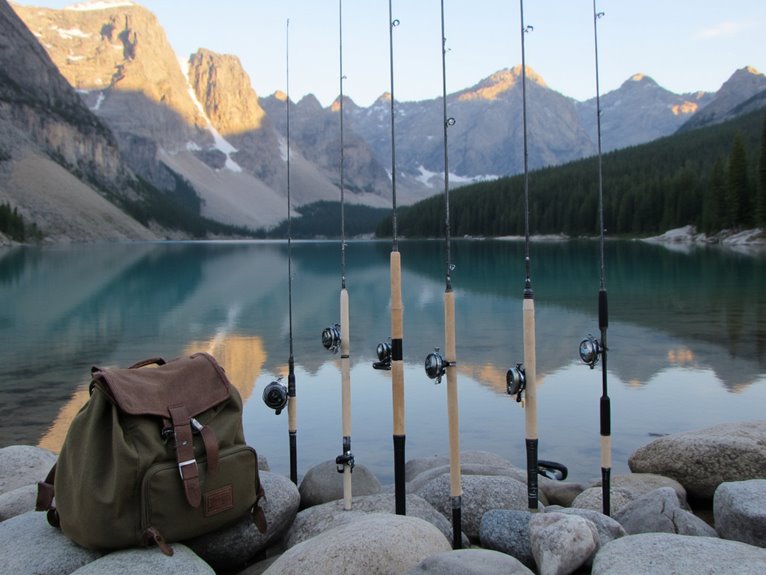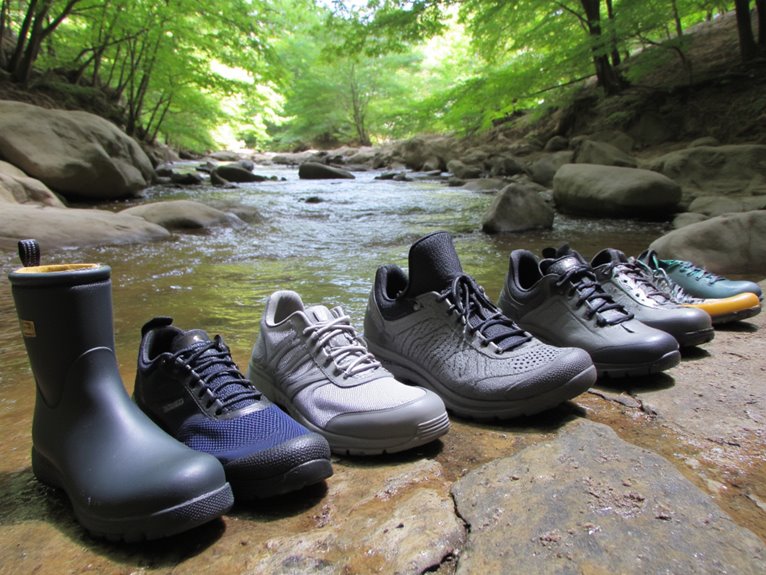Are Sleeping Bag Liners Useful in Hot Weather Backpacking?
You’ll find sleeping bag liners exceptionally useful for hot weather backpacking as they create breathable barriers that wick moisture while weighing only 4-7 ounces. They function as standalone sleep systems above 55°F, eliminating bulky bags and saving 1-3 pounds from your pack. Silk and synthetic materials like Coolmax excel at temperature regulation and quick-drying performance. Beyond sleep, they serve as hygiene barriers, emergency blankets, and instant pillows while compressing to water-bottle size for effortless packing and enhanced comfort.
We are supported by our audience. When you purchase through links on our site, we may earn an affiliate commission, at no extra cost for you. Learn more. Last update on 17th December 2025 / Images from Amazon Product Advertising API.
Notable Insights
- Sleeping bag liners wick moisture and prevent clammy sensations, keeping you comfortable in humid hot weather conditions.
- Liners can function as standalone bedding above 55°F, saving 1-3 pounds compared to carrying full sleeping bags.
- Silk and synthetic materials offer superior breathability and temperature regulation while weighing only 4-7 ounces.
- They compress to water bottle size and provide versatile emergency layering when temperatures unexpectedly drop at night.
- Liners are easily washable and dry quickly, maintaining hygiene without the hassle of cleaning bulky sleeping bags.
Benefits of Using Liners as Breathable Sleep Solutions
While sleeping bags excel at insulation, they often trap excess heat and moisture during warm weather backpacking, creating an uncomfortable sleeping environment that disrupts rest.
Sleeping bag liners solve this problem by enhancing airflow within your sleep system. They create a breathable barrier that improves ventilation compared to direct contact with sleeping bag materials.
Effective moisture control becomes critical when temperatures rise. Liners wick perspiration away from your skin, preventing the clammy sensation that leads to poor sleep quality. This moisture management reduces condensation buildup inside your bag, maintaining a drier environment throughout the night.
Nighttime breathability improves considerably with liner use. The enhanced air circulation prevents overheating while reducing friction against coarse sleeping bag fabrics, creating a more comfortable sleeping surface that promotes restful sleep.
Liners also function as standalone sheets in warmer conditions, allowing you to leave the main sleeping bag unzipped or packed away entirely when temperatures make full insulation unnecessary.
Material Selection for Warm Weather Conditions

When selecting a liner material for hot weather backpacking, fabric breathability determines your comfort level more than any other factor.
Synthetic material types like Coolmax and Thermolite excel at moisture-wicking, pulling sweat away from your skin efficiently. Silk offers superior temperature regulation while remaining ultra-lightweight at just 4.7 ounces.
Consider fabric properties carefully when choosing between options. Polyester liners weigh around 0.5 pounds and dry quickly, though breathability varies by weave density. Microfleece provides excellent moisture management but adds potentially excessive warmth—up to 14.3°F temperature increase. Silk delivers ideal balance, adding only 9.5°F while maintaining breathability.
Silk strikes the perfect balance for hot weather hiking—adding minimal warmth while maximizing breathability and moisture control.
Avoid cotton liners in hot conditions. They retain moisture and add unnecessary insulation.
Prioritize synthetic materials with proven moisture-wicking capabilities for consistent comfort during warm-weather adventures. In extremely warm conditions down to 50°F/10°C, liners can function as standalone bedding without requiring a sleeping bag at all.
Hygiene and Comfort Advantages in Hot Climates
Beyond material properties, sleeping bag liners deliver significant hygiene benefits that become increasingly important during extended hot weather expeditions.
You’ll maintain cleaner gear while improving personal comfort through effective sweat management and odor control.
Hot climate advantages include:
- Moisture barrier protection – separates your body from the sleeping bag’s interior fabric
- Easy washing capability – lightweight liners dry quickly compared to bulky sleeping bags
- Sweat absorption – wicks moisture away from skin during humid nights
- Extended gear lifespan – reduces washing frequency for expensive sleeping bags
- Versatile comfort layer – functions as standalone bedding in extreme heat
Liners absorb perspiration before it penetrates your sleeping bag’s insulation.
This separation proves essential during multi-day trips where washing opportunities don’t exist.
You’ll sleep more comfortably while preserving your primary gear investment.
Weight and Packability Considerations for Summer Trips
Every ounce matters on summer backpacking trips, making weight optimization essential for your comfort and performance on the trail.
Sleeping bag liners deliver impressive weight savings compared to full sleeping systems. Silk liners weigh approximately 5 ounces, while cotton and synthetic options range from 6-10 ounces. This minimal weight penalty provides significant versatility for temperature regulation.
Pack efficiency becomes vital when space is limited. Liners compress to roughly the size of a water bottle, occupying minimal pack volume. You can easily stuff them into corner spaces or external pockets without compromising your gear organization.
In temperatures above 55°F, liners function as standalone sleeping solutions, eliminating the need for heavier sleeping bags entirely. This substitution can save 1-3 pounds while maintaining adequate comfort for warm-weather conditions.
For ultralight backpackers seeking even greater weight reduction, ultralight inflatable sleeping pads weighing under one pound can complement liner-only sleep systems while providing essential ground insulation and comfort.
Versatile Applications Beyond Traditional Sleeping Bag Use
Sleeping bag liners excel far beyond their primary function as temperature regulators and weight savers. You’ll discover these lightweight accessories transform into essential multi-purpose gear during hot weather backpacking adventures.
Consider these versatile applications that maximize your liner’s utility:
- Travel blanket for unexpected temperature drops at high elevations or windy campsites
- Instant pillow when bunched and secured inside your stuff sack
- Hygiene barrier in shared shelters, hostels, or emergency accommodations
- Emergency layering system when weather conditions deteriorate rapidly
- Moisture management tool in humid coastal or tropical environments
Your liner weighs 4-8 ounces yet replaces multiple items. It functions as personal bedding in mountain huts, provides clean sleeping surfaces in questionable accommodations, and offers thermal backup when temperatures plummet unexpectedly.
This versatility justifies the minimal weight penalty.

